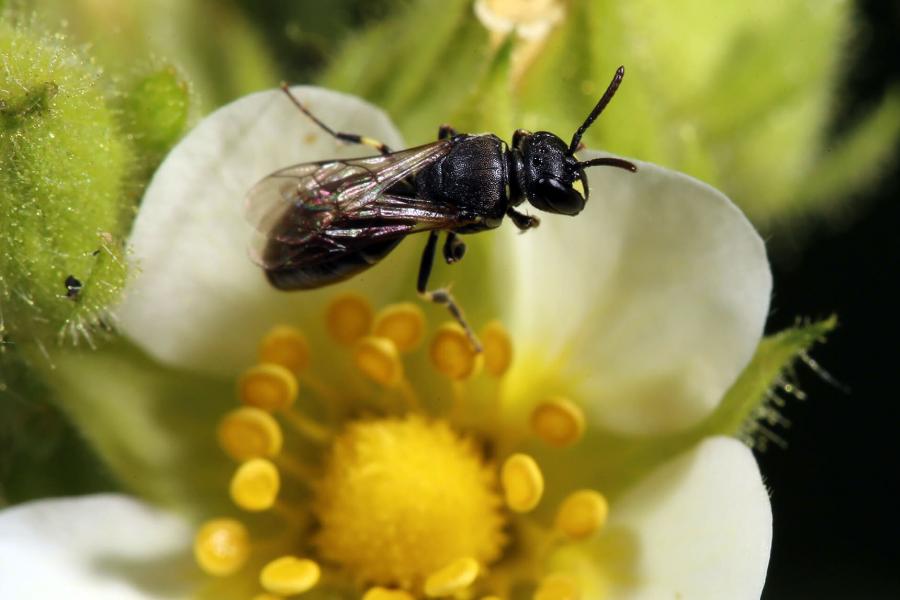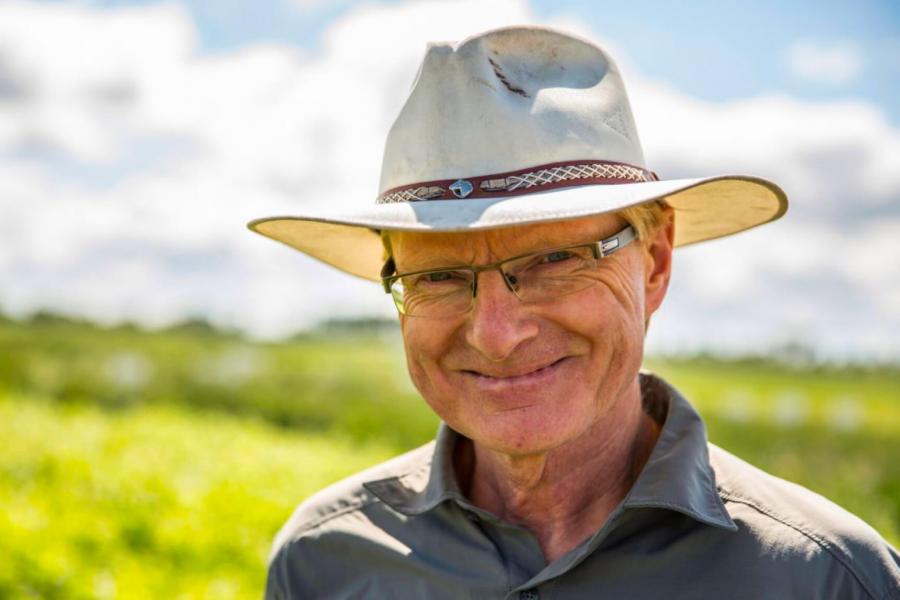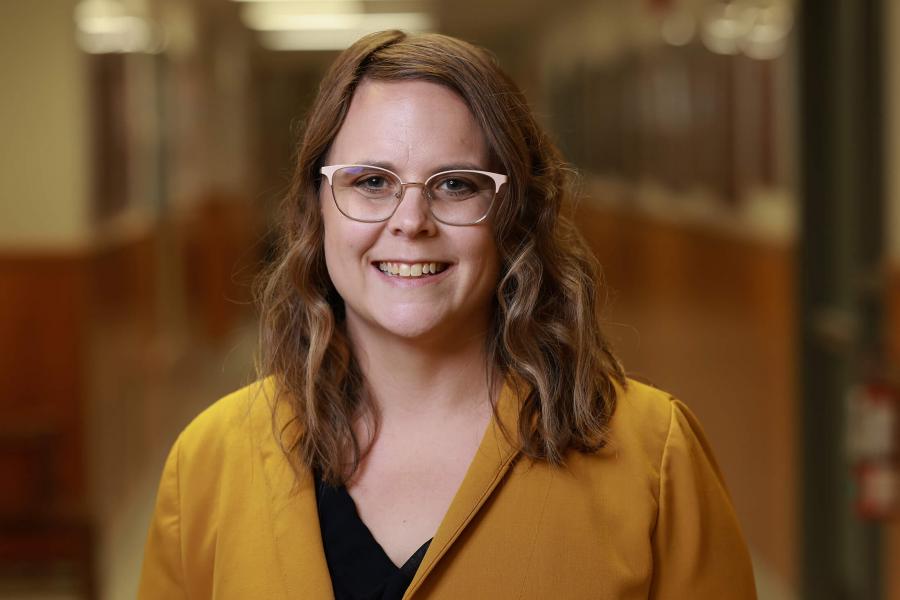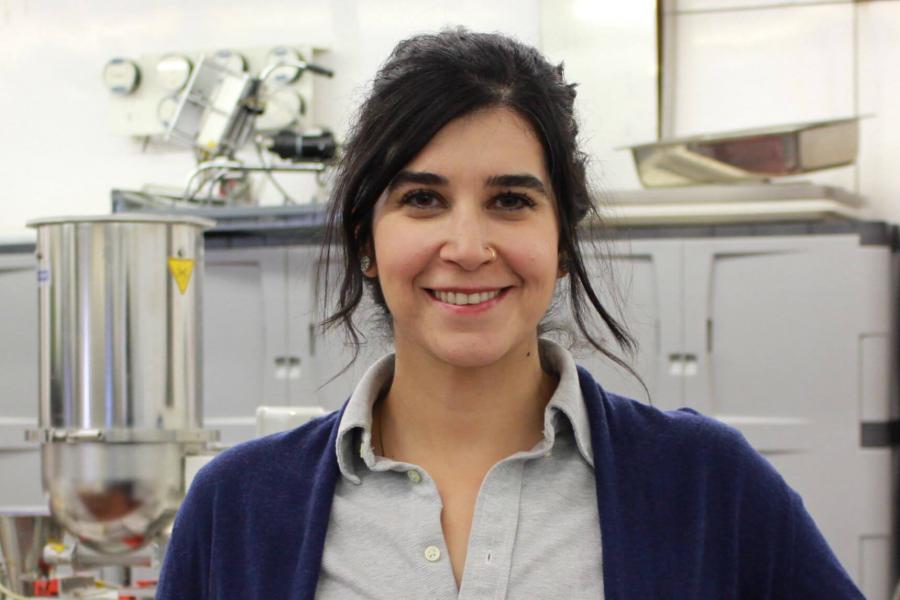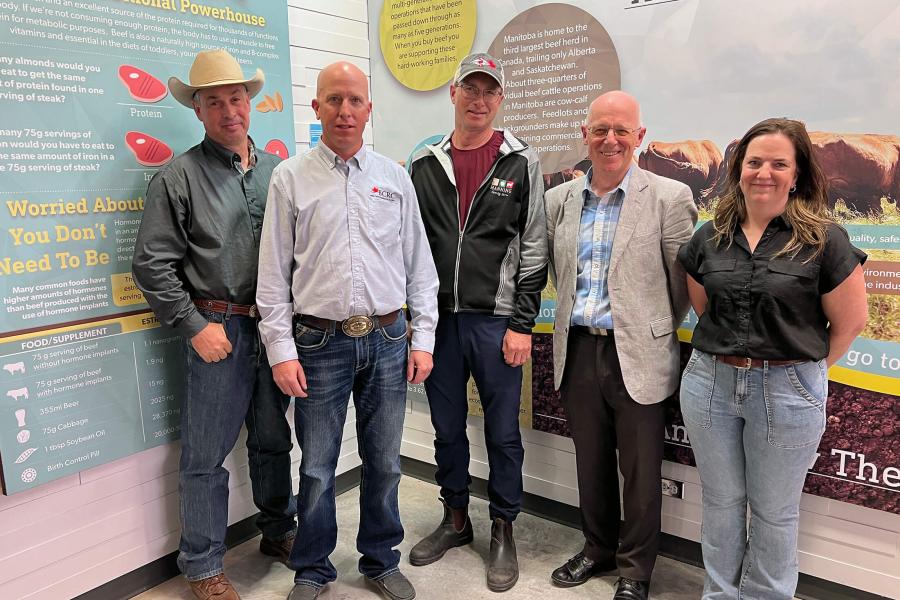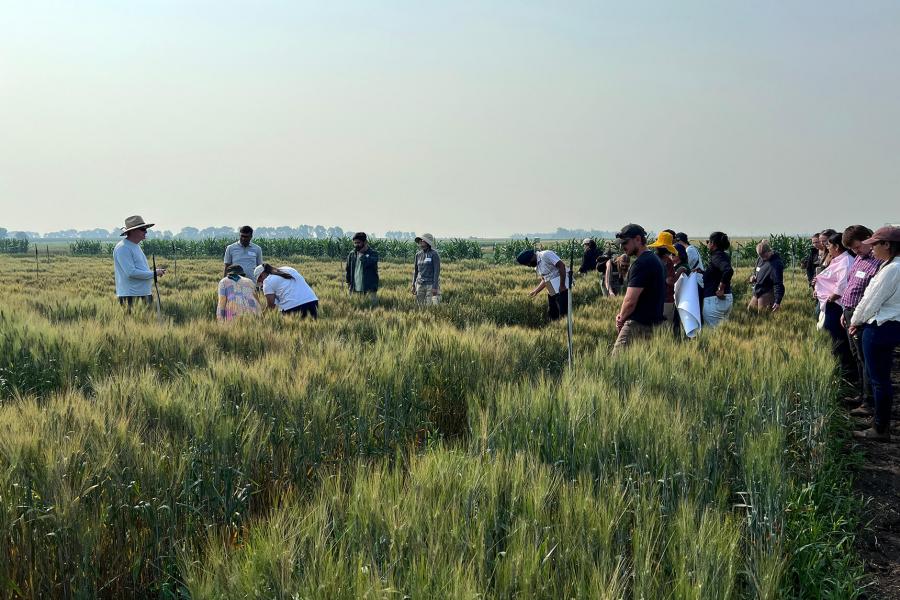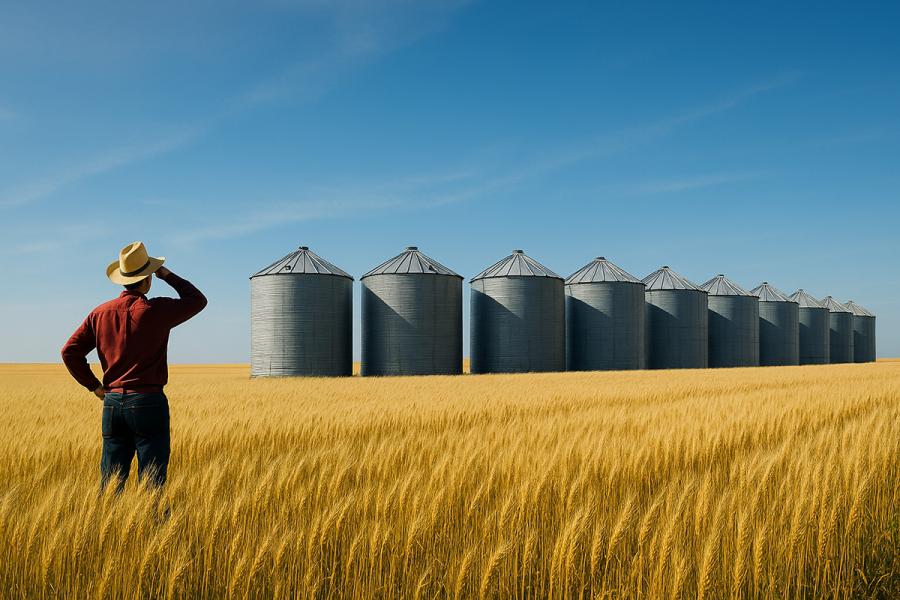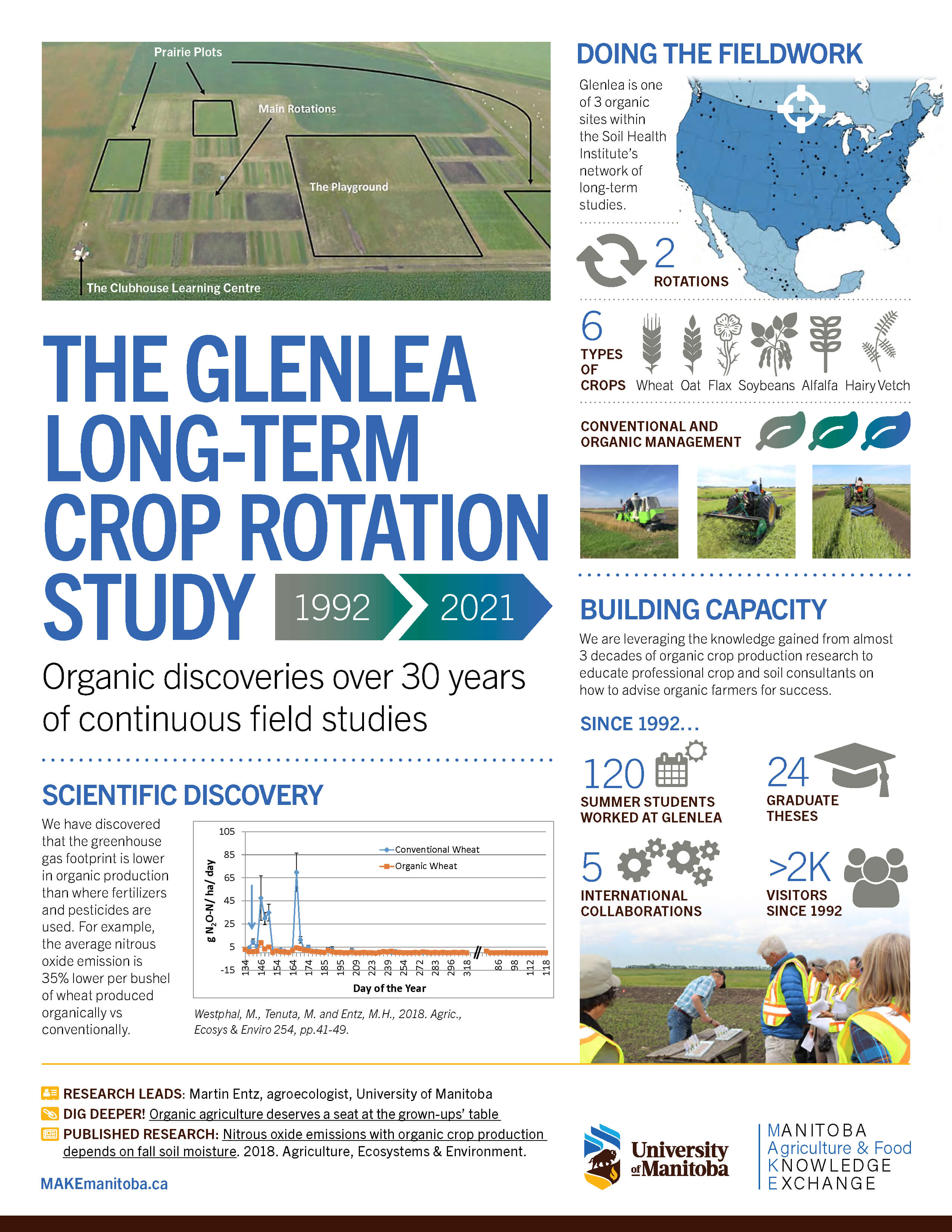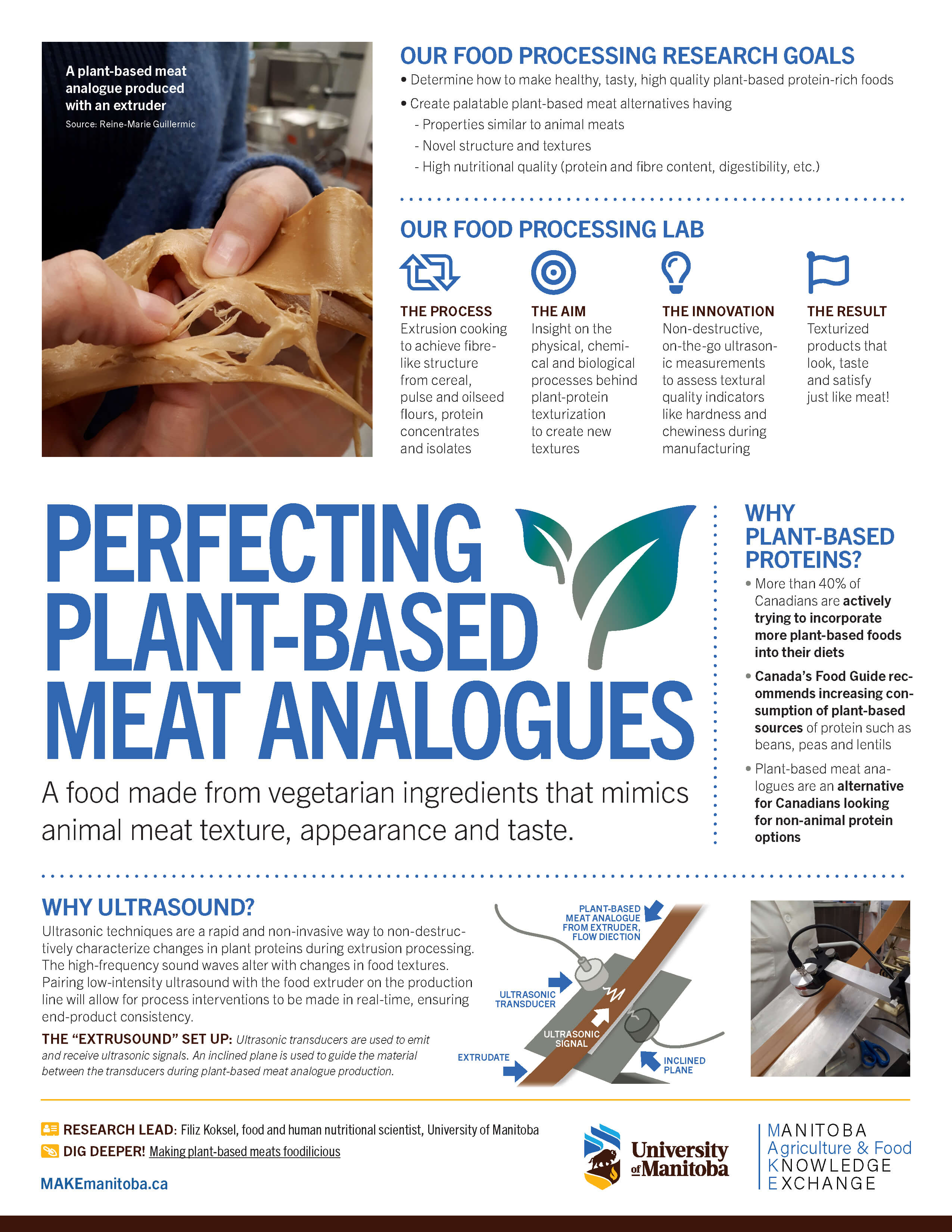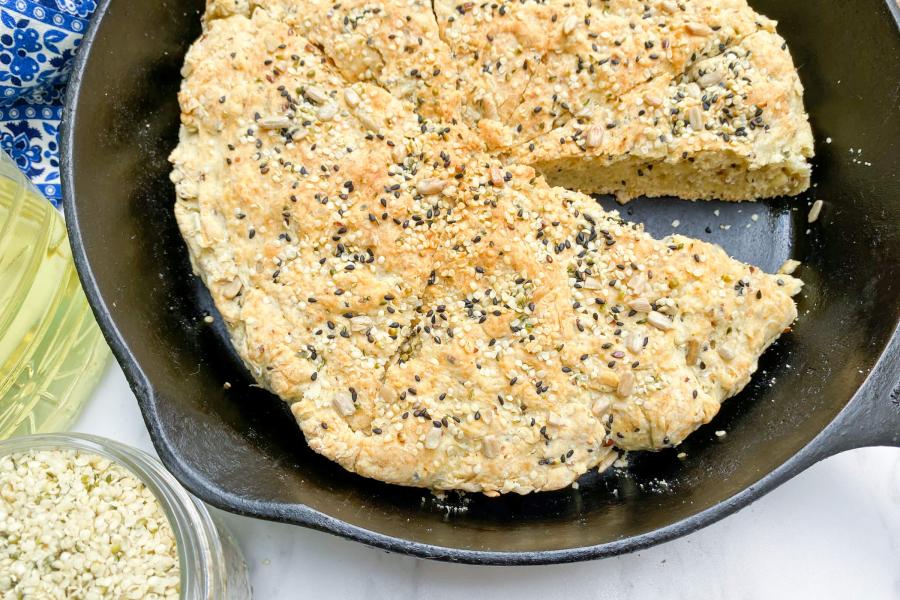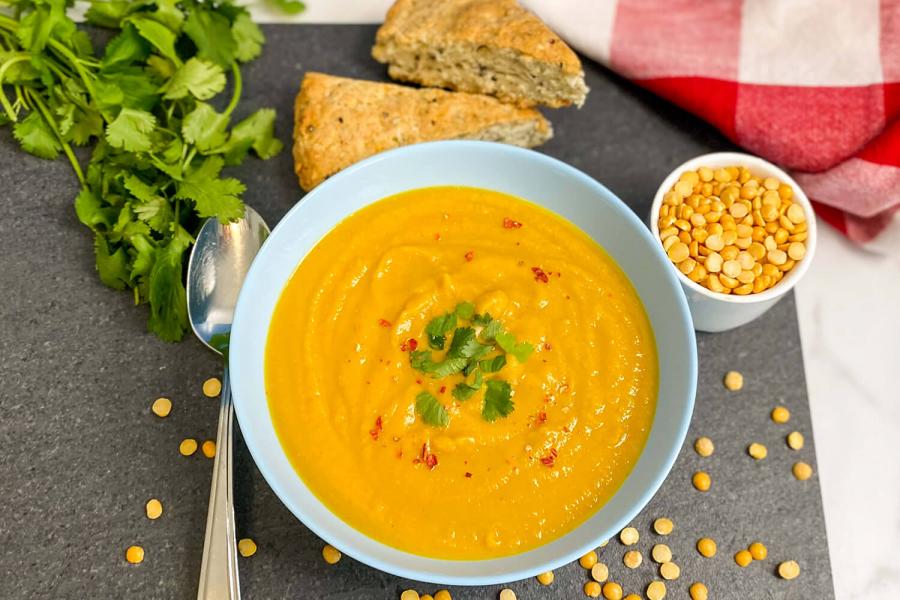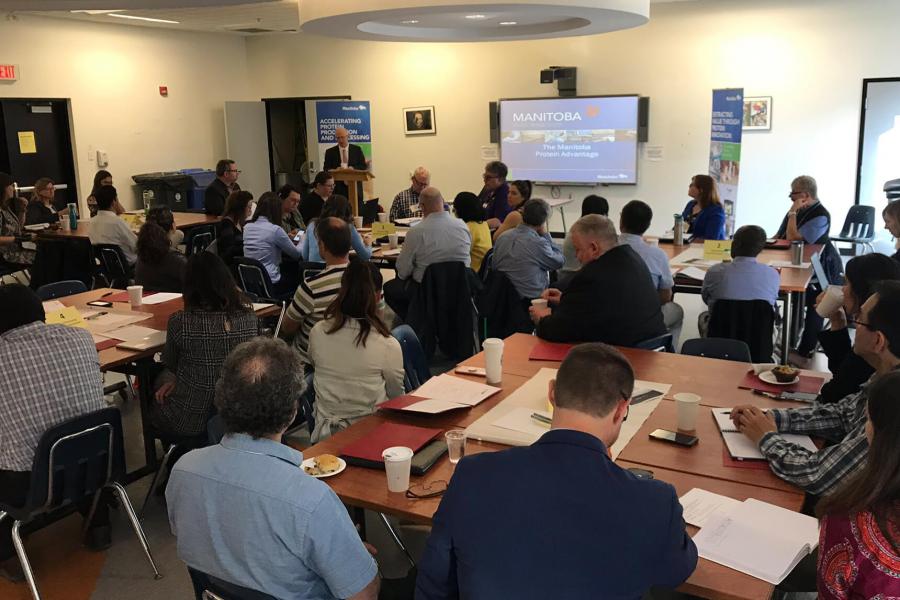Faculty of Agricultural and Food Sciences
Manitoba Agriculture and Food Knowledge Exchange
The MAKE - Manitoba Agriculture and Food Knowledge Exchange - where we share Faculty of Agricultural and Food Sciences research that is shaping agriculture and food production in Manitoba and around the world. Research covers protein foods innovations, food safety and nutrition, crop breeding, animal care, environment health, sustainability practices to continuously improve our shared food system and more.
News
Articles and news stories about our research
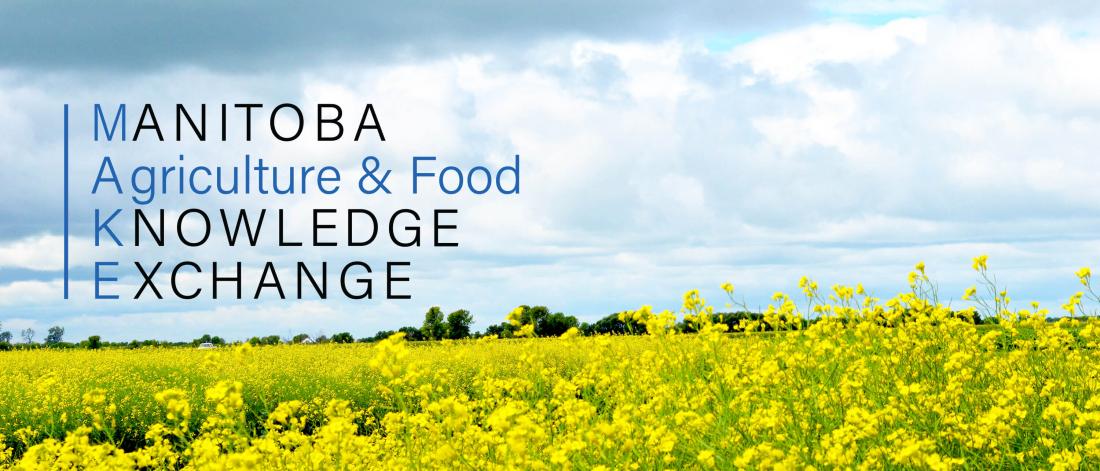
Events
Podcasts
Covering exciting research from field to plate and everywhere in between.
ChangeMAKErs - Dr. Nasem Badreldin

Welcome to ChangeMAKErs, a MAKEManitoba podcast series highlighting research and innovation powered by members of the Faculty of Agricultural and Food Sciences.
In this episode, host Peter Frohlich, research development coordinator with the National Centre for Livestock and the Environment (NCLE) talks with Dr. Nasem Badreldin, Assistant Professor, Department of Soil Science.
Learn about his journey into digital agriculture, his research on soil health, crop yield prediction, and grassland resilience, and how advanced sensing technologies and AI are shaping the future of sustainable agroecosystems.
Transcript
Intro:
The way we grow and produce food is ever-changing, shaped by consumers and the climate in which we live and farm. Research at all points of our food system is essential for continuously improving food's journey from farm to table. The Manitoba Agriculture and Food Knowledge Exchange explores timely research innovations and applications that make our food system better than ever. Join us for today's podcast.
Peter Frohlich:
Hello and welcome to ChangeMAKErs, a Manitoba Agriculture and Food Knowledge Exchange podcast series. My name is Peter Frolich. I am the Research Development Coordinator for the National Center for Livestock and the Environment at the University of Manitoba. In each episode, we chat with an academic member of the Faculty of Agriculture and Food Sciences at this university to find out about the research they're working on and how this research is shaping agriculture and food production in Manitoba and beyond. We also get to know the researchers and get to know the person behind these discoveries. Today, I'm joined Dr. Alan lrita Goswami, who is an assistant professor at the Department of Agribusiness and Agricultural Economics right here at the university. Thanks for joining us, Alank rita.
Alankrita Goswami:
Thank you so much, Peter, for having me.
Peter Frohlich:
So, Alan krita, before we get into the details of your awesome research, can you please let us know why you decided to become a researcher and a professor and how you got interested in your field of research?
Alankrita Goswami:
To answer that question, I will have to go back to my undergrad studies back in India. So I did my undergrad in biotechnology. So by that degree in India, I'm an engineer in biotechnology. At that point in time, it was more of a motivation calculated by my mother. So my mother, when she got married before that, she was doing her PhD in genetics. And when she got married, she let go of that. She left her PhD program. And so I think she did very good job marketing biotech. And I remember in high school, when you get into the last two years of your high school in India, you need to pick a bunch of subjects. And that decides if you'll go into the science area or if you'll go into the commerce or arts area. So I happen to have picked up, because of strong marketing by my mother, biotech with maths, physics, and chemistry. And that's what landed me in that biotech program at the university there. And then it was a personal decision. and motivated by a lot of reasons. So I wanted to be in a kind of area where I could give back to the community. And even though I did like biotechnology, I just felt that there are better ways of reaching out to the community in some form. So what attracted me was a program in rural management, which I happened to get into. Finally, I secured a seat in that program in the Institute of Rural Management, Ananda. And there we had the rural component where you have to do three internships. So along with whatever management, MBA things that you're learning, you get to work in the rural areas. And that was where I got my rural exposure in rural India. And it was very interesting for me because I was a city person never having experienced something like that. From there on, it was more about getting deeper into agriculture and then agricultural economics. I did my pre-doc work with international Water Management Institute. From there on, I went on to do my PhD in Agricultural Economics from University of Georgia in the States. And then finally, I'm here. I joined here in November 2022. That's a snapshot of my journey so far, but whatever I do is driven by the idea how I can give back to the community in some form. It can be teaching, it can be my research, it can be something else. So that is one of the driving forces in whatever it decisions I make.
Peter Frohlich:
So just getting back to India, what are some of the differences between agriculture in India and agriculture in Canada?
Alankrita Goswami:
That's something which was very interesting for me to observe. When we talk about agriculture in India, we are talking about a majority of that agriculture, the agrarian economy, being serviced by small farms. So a small farm can be a 2.5 acre farm. A big can go on to mean just 10 to 20. Small has a very different definition in North America. So in the U.S. or Canada, if you see small can be something like 70, 100 acres. So the scales are very different. And each time when you talk about policymaking in India or you talk about bringing new inventions related to agriculture in India, it can mean different for different areas because India is still a developing country. It's making strides in terms of economic development, growth and everything but the economy is still serviced by 40 to 50 percent of the workforce employed in agriculture and that workforce in itself is very very diverse you'll find majority of them are small farmers so each time policymakers make a decision they have to weigh in all the aspects of it and that's why it's very challenging working in those areas and the perspective of farmers is very different from that and so when you come to North America you understand the agribusiness sense of doing agriculture the business sense it's big the scales are big and you get to learn so much here, I always encourage my students in the undergrad agricultural marketing class especially if you're coming from the rural community even if you're not take pride in the fact that you know you're sitting in the food basket of the world and whatever changes come here they are emulated in other countries across the world the thing which fascinates me is, like I said, the business sense that goes into agriculture. New technology coming in, okay... what will be the return on investment? That's how the farmer thinks, right? And then the scales are there. So it's a very different ballgame, but it's interesting to see. I think I've been very lucky to observe those differences in two different parts of the world.
Peter Frohlich:
So you came from Georgia, and then you started your PhD, or you've been working as an assistant professor, right? What is your research area about, and and why is this important?
Alankrita Goswami:
As I transitioned from my pre-doctoral work in India, there I was doing a lot of field work as well. So yes, I was working on, let's say, econometrics of agricultural questions, et cetera, but I used to get to be in the field a lot. And as I transitioned in my PhD here at the University of Georgia, I went on to work in the area of what we call price analysis, commodity markets, and my work has been more along the lines of understanding how commodity markets work because commodity markets, agricultural commodity markets here in North America are global benchmarks on soybean, wheat. If we talk about surprises in those markets, attract by ag businesses, by communities across the world. And so my work entailed looking at the functioning, functionality of these markets. If the hedging in the market is what it is supposed to be for a from the perspective of agribusinesses, from the perspective of farmers. And it's important to keep studying the markets from time to time because the agricultural futures markets, the area that I work in, they have been designed from the perspective of offering risk management opportunities to farmers. Farmers can be going for a bunch of risk management strategies and futures markets can be part of that strategy, if not the only strategy. for them. So it's studying their risk management strategies, but also looking at the functionality of the agricultural futures markets, like an exchange, how it functions. Is it resilient enough to any of the shocks coming to the markets? So just imagine stock markets, right? If in stock markets you have shares of some companies, you're tracking the market all the time. And when the revenue reports of those companies come in, that's news to those markets. Same way in these markets, news related to to crops. Corn, how is the growing season? Or soybean, has there been a drought or something? So that is news to these markets and it can move those markets. So move the prices. But when I see it can move markets, I say the prices get impacted by that news. So it's very much similar to the financial markets or the equities markets, but still these markets are very different in the sense they follow the fundamentals of the cropping cycles or if we are talking about crops. And if we are talking about something like live cattle or lean hogs markets, then again, what is the seasonality aspect attached to those markets? So that is a part of the fundamental knowledge of the markets. So that is what determines the price movements in these markets. And that's why they are different from the other financial or equities or those markets.
Peter Frohlich:
Can you quickly define what futures are for our audience?
Alankrita Goswami:
So futures markets were an innovation back in the day. Just imagine, so you have cash markets. So cash markets are where actual physical delivery of the commodity takes place. Farmer goes, sells his or her their corn, or they can sell their soybean, they can sell their wheat. That's the actual physical exchange of commodity taking place. And futures markets were designed from the perspective of tracking prices in the cash market. So they are mimicking the same setting , but no actual delivery takes place in the futures markets. So what you have is you go into agreements in futures markets. And why would, as a farmer or an agribusiness, you would want to go into an agreement? Let's say, let's talk about corn as an example. A farmer will get interested in futures markets as farmers look at the price for a corn futures contract. By a futures contract, I mean, let's talk about new corn futures. By new corn futures contract, I mean December corn. futures contract. Now this December corn futures contract, let's say we are talking about December of 2025 this year. The crop will go into ground. Decisions had to be made sometime around April and we are looking at a growing period from April to November or December. That's why December futures contracts are known as the new crop futures for corn. The farmer will be interested in tracking the price. It's trading right now. So if you'll go to CME's website, you'll see corn futures contracts chicago mercantile exchange website will show you the price for december corn so if let's say we are right now in april i can see the price so the market is predicting and the market is predicting upon based upon the fundamentals okay we are expecting that this is what the weather will be like their predictions related to the weather so possibly this is what the growing season will be like so right now it will be tracking a price for corn but for December harvest of that corn. Just a small question to you. As a seller, forget about corn right now. As a seller, what is the primary aim for you? Do you want to sell as high as possible or as low as possible?
Peter Frohlich:
Well, I want to make some money, so sell as high as possible.
Alankrita Goswami:
Exactly. So just now think about from the perspective of a farmer. The farmer sees that he's tracking that price of corn right now, and he believes from his past knowledge of, let's say, five or ten years, historical price patterns, etc. He believes that's a very good price to lock in right now. They'll go in the market and sell a futures, corn futures, December corn futures contract, given whatever price. So he'll lock in that price right now. And when they lock in that price, we need to be mindful of the fact no physical delivery is taking place in futures contract. You go into an agreement, you lock in that price, so you're sure that this is the price that I'll get. But as you near the, so you have placed a hedge right now, whatever I described, you placed a hedge in the market. Or there's another way of saying it, you are going short in the market, meaning you're selling as a corn farmer. And then you decide that, okay, around the time of November or December, which is the harvest time, you will lift that hedge. So you placed a hedge, you lift that hedge. Now, lifting a hedge in futures markets mean if you sold a few, let's say you sold one contract one futures contract, which is, if my memory serves me right, it's 5,000 bushels. You place the hedge, you sell that futures contract, now you need to offset it. meaning you will buy a futures contract at the end of the hedging. So this becomes your hedging horizon, April and December, and then you will be selling that. You don't actually do any physical delivery here. When you buy the futures contract back, you have offset your futures market position, and now you can go out and sell your crop in the cash market. After whatever gain or loss you make, on the futures market across this hedging horizon, plus whatever you sold, like in terms of your cash price, right? You got a cash price after selling your actual commodity in the market. That determines to what extent you were able to hedge away the risk in the cash market. Because why were you interested in locking in that price in the futures market? It's because it gives you a certainty. Okay, this is the price. If I lock it in right now, let's say the growing season did not pan out as you were expecting. Maybe there were, after the growing season was over, maybe too many farmers planted corn thinking that it's going to be a great season, good weather and everything. And there was plentiful inventory of corn or harvest of corn at the end of the growing season. What will happen if there is too much corn in the market? The price come down around the harvest time. So that's not a good movement of price for you. So you hedged away that risk attached to the uncertainty in the market. That's whenever we talk about agricultural futures markets. For agribusinesses, it's more about hedging away the risk. The uncertainty can pertain to your production cycles. It can just pertain to market in general, just like this city. Too many farmers ended up growing corn due to some reasons. So that's how futures markets work for you.
Peter Frohlich:
That's a really great explanation. And so within this frame, where does your work fall into this? Like you're looking at the price and how it changes and what affects it. Is that correct?
Alankrita Goswami:
Yes. I remember my... PhD thesis was about looking at the functionality of corn, soybean, and wheat markets as a hedging mechanism for farmers, and especially in cases which are considered to be abnormal in the market. So one such case was the non-convergence episode of 2008 and 2012. By non-convergence, I mean price patterns pertaining to cash and futures. Now, I just explained that futures market tracks the cash market. Now, what I showed to my students in the undergrad grad classes that the prices move together. So if I plot futures prices and cash prices for, let's say, corn together from over a span of time, you'll see them and they'll track. It's just that what happens is as you near the contract expiration, so what example I was sharing earlier with you, December futures contract, that's the new crop futures contract. At the end of any contract, so there are many contracts, December, September, depending upon the commodity, you're looking at corn, soybean, over a period of 100 years or so, they have been able to determine what month contracts are important to farmers, agribusinesses, etc. Now, one natural trait of all these contracts is that the difference between the cash price and the futures price should become equal to zero or close to zero near the contract expiration. For this December new futures, it would mean the last month, December. So when we are in December month, the cash and futures prices should So they go. So when the contract is floated, let's say maybe in 2024 sometime, the prices will be far away. Why do you think the prices will be far away? Just imagine the futures market is predicting price. So you are very far away from the growing season in 2025 and you're tracking it. The market is uncertain. So the cash and futures prices are far away. As you near the end of that growing period in 2025, which will be somewhere near November and December, depending upon which part of North America you are in. They should start tracking. They come closer because the futures market should become better in predicting what will happen. So they should converge at the end. What happened during that episode of 2008 and up till 2010 or something, that they were not converging. And it was found that it was more of an artifact of how the storage rate is set. Storage rate is something where, so in the maths of things, I won't go too much into the specifics of it, but in the maths of the futures markets tracking those prices, you'll see that the exchange has to decide on a storage rate. Storage rate is tracking the price in the storage market for corn, soybean and wheat. So those storage rates were inflexible. They have to be flexible enough to be tracking the actuality of the market. That was one of my other papers. So one paper looked at the functionality of hedging during those episodes from some somewhere 2008 to 2010. And then the other people looked at what was causing that. And whatever policies then were implemented to contain that situation and make the storage rates flexible, did it work the way it was supposed to work? And it did. So now the markets have been working really well, like they should be. What they implemented was a variable storage rate, which tracks the actual market price of storage pretty well now. It has been working well from, I think, 2011 now. So 2008 to 2010 was a very intense period when the market was not tracking. And what it does is the hedging decisions of farmers and agribusinesses are basically built upon the fact that these farmers do understand that there's something we call basis risk. Basis is the difference between cash and futures prices. Now, if there's a certain level of predictability, so farmers and agribusinesses are smart enough to know that, okay, even though the market will be tracking the cash market price, there's always that basis risk that they might not exactly convert. So they take into account that basis risk. But when that risk is still there, when the markets are converging, just imagine what it means when the markets are non-converging. So then their plans of hedging in the market or whatever losses or gains that they can make in the market, their plans will be thrown off. The predictability of the market will come under question. Given how I really give credence to the fact that the regulators of the market are very very observant and that's why both the regulators the observers and researchers have to make a continual effort to keep tracking the functionality of the market and that's very interesting to me because markets working at this scale that they do work at and then how effectively they are able to do whatever they are able to do with a very observant regulators taking care of the market design then it It's beneficial because it helps you with price discovery. Like I said early on, these are global benchmarks. What price is being observed in the corn market at the CME exchange, it's kind of like a benchmark to the world. These are the corn market prices here. So they are being tracked across the world. They are being tracked by agribusinesses, big global businesses for their different functions and everything. So these should always be functioning really well. So that's one part of it, which I really find fascinating. like how if markets are designed well, how they can facilitate risk management for a set of businesses, which might be very much prone to something like production cycles. Agribusinesses are full of risk. That part is really fascinating to me, and that is what I have been able to do in my PhD work.
Peter Frohlich:
It's a very passionate exploration of the microstructure of the market, which is wonderful. So producers, farmers, how do they benefit from the work that you do?
Alankrita Goswami:
So What I explained to you was looking at markets at maybe a daily frequency. The other work that I do is more on the microstructure. When I say microstructure, you are looking at the market at a nanosecond level. When I was saying daily frequency, you'll see one price for that day. Now, at a microstructure level, you can see order activity. Now, orders will just have an order ID attached to it. An order will be coming in with a price and quantity attached to it. From the price and quantity and all the orders coming in, you can visualize through what they call the limit order books that what sort of orders are coming in. And then given your understanding of the market, you can categorize those orders as aggressive, non-aggressive. But what becomes interesting to see at that nanosecond frequency level is now one central trait of futures markets is as a seller, when you're going in, you go in, you don't have to wait. You'll have a buyer sitting on because you sell, right? So there has to be a buyer for that exchange. If you're a buyer, you go in, there will always be a seller. So that aspect of market is called how liquid the market is. Common market is very liquid. So it's what we call a thick market. And when we have a thick market, you are certain that no matter whenever you go in, place an order, there will always be a taker of your order at the other end. And then there are different types of orders. That aspect is important to understand how order activity works. So there's something called trades, which means you are a kind of trader who wants immediate execution. So you go in, you go with a very aggressive price because you're seeking execution of your trade or we call market order. So in that aspect, you are a person seeking immediacy. The other kind of trader could be a person who wants to wait out a little because the person knows, the trader knows probably the market will improve over a trading session and I'll wait. So what the trader goes in with is the limit order. So limit order, again, a price will be there, but you're not seeking seeking any immediate execution of your order. You will place that order in the market and you will wait and see if the price improves. If the price improves, either you will edit your limit order to get it to a better price so that when a market order comes can hit it or you can simply wait it out and the market evolves over the trading session and then it will be hit by a trade or you just edit it and put it as a trade or something. So it depends. So there are different kinds of intentions involved. Now imagine at a nanosecond frequency, we are talking about nanoseconds, we are talking about one trading session now. This is how the market is evolving, right? Different intention, different traders coming in with different interventions. And there's price formation. Each time a kind of trade comes in, limit order comes in, or even when you cancel an order, it's impacting the price because it's impacting the liquidity in the market. So everything is related to everything else and it's like a very what we call an endogenous system meaning one thing can impact the other price changes can impact order activity order activity can impact price changes my aggressiveness as a trader can also impact your aggressiveness as a trader so it evolves over a trading session so that is important to understand at the nanosecond frequency from both perspectives first the perspective that comes in is the policy makers or regulators so just like the work I talked about which I did on a daily frequency format, it was more along the lines of, okay, are they doing their job on a daily basis? So for the policymakers, it was important to look at regulators. Oh, yes, whatever policy we implemented, it has worked over a span of time. So it has been working well. Here, the regulator would like to know if at this frequency, the markets are resilient. When a trader is coming in, putting a very aggressive order, like a market order, immediate execution, it takes out liquidity out of the system. Cancel takes out liquidity out of the system. Limit orders provide that liquidity. So there's liquidity replenishment and exhaustion cycle. To keep it intact, the market has its own mechanism. So it's following a mechanism. And there are no actual market makers who can control somehow that mechanism. The market itself, working through different algorithms, has a design that should ensure it. If the markets are not resilient or liquid enough, then the markets can fall apart at times. So that's always something that the market designers are looking at. They want to view it. That's from the perspective of regulators. Okay, are the markets functioning the way we want to function them? Now, from the perspective of users, such as farmers, agribusinesses, why is it important to look at it? Now, my pitch has been, this work that I've been doing in microstructure has been like, these days, so agricultural commodity markets are famous for what we We call hedge funds getting into the market. So like I said, there are different players in the market, different intentions. Agribusinesses, farmers have the intention of hedging away their risk. So they go into the market. Then we have something called speculators. Part of those speculators can be hedge index funds. Hedge index funds go into the markets with the intention of gaining passive exposure in the agricultural commodity markets. Passive exposure means that they are following the trend, price trend in the market. So they are looking for those profits. And part of their strategy, index funds also want to, so they're handling the risk profiles or portfolios of other big businesses who are probably in the financial markets or equities markets. So they are investing there. And those markets have their own risks. Now, agricultural commodity markets do not really get impacted by whatever factors are driving financial or equities markets. It has been identified by hedge index funds that, oh, we have risk in financial markets. We'll hedge them away in the agricultural commodity markets because the movements will be not related, interrelated to the equities markets. So they use the agricultural commodity markets. Now, these hedge index funds come in with very strong high-frequency trading algorithms. So they work on those algorithms. They are working for big players. They have big portfolios to handle. And when the other set of of traders such as agribusinesses, farmers going to the market, they are, I wouldn't really say that they are pitted against these high frequency traders because the intentions are very different. In fact, speculators, these hedge index funds are bringing in that heavy liquidity in the market, which the agribusinesses, farmers and all of those traders need. But at the same time, those two different types of traders work with different intentions and work with different settings, different kind of algorithms. The agribusinesses might not really be involved in algorithmic trading until and unless they are commodity traders who rely on some form of algorithmic trading, but not to an extent where they can match the speed of high frequency traders. This kind of work, what it can bring forth is if I can figure out the evolution of that market on that scale, then I can come up with some technical insights for the agribusinesses. Okay, this is how the market is functioning and this is the pattern that we are observing. So let's say on a news day, What will be a news day for our markets? It would be, let's say, U.S. Department of Agriculture releasing a crop report. So that report comes in, and there would be news about, oh, this is the supply, this is the demand, and this is what the market looks like. Based upon those fundamentals, the prices in markets can move, but the order activity can also be impacted by that during a trading session because those reports come in at a very specific time. What we notice as researchers is the order activity changes right when that report comes And there's very high order activity during that span of time. And the way the traders will behave will be very different. So that becomes important to understand if I have to tomorrow give some technical insights related to, let's say, live cattle markets to farmers. What it is like to trade on a news day versus a no news day when they're making their decisions. So those kinds of technical insights can be of value to you if I can figure out the evolution of a market across those traders. trading days. So for that, I'll need to figure out at that nanosecond frequency evolution of order activity, but across a span of, let's say, one or two years. So I'll be looking at each of those trading days across those years and then compare the news days versus no news days, and then give the gist to them if they go in the future in the market to trade. So that's how I visualize it right now.
Peter Frohlich:
That's a lot of intricacy that happens behind the scenes. Out of all the work that you've done, what is the most exciting, fine that you have discovered?
Alankrita Goswami:
One of my recent papers which has come out is I was looking at the effect of growing season weather on the market dynamics on a daily basis, but the interrelated price dynamics across what we call substitute biofuel feedstock markets. So that means U.S. soybean oil, Canadian canola, Malaysian and Indonesian palm oil futures markets. And this is an interesting setting because these markets are central to the global biofuel supply chain. And then you have really the markets which are becoming more competitive with these markets, such as Brazil's market. How can the growing season in, let's say, Mato Grosso in Brazil impact the prices in these markets? So that is something that we worked on and we looked at how it impacts the prices, how it impacts the volatility of prices. I had to track the growing season somehow. So I was able to track it through what we called the Vegetation Health Index. Vegetation Health Index will give you an understanding of how is the vegetation during the growing season of a crop. Say I was looking at soybean oil market prices, but my Vegetation Health Index will be tracking the soybean health in the growing regions of America, of Brazil, etc. Looking at that, I try to ascertain what impact that information, because that's news to the harvest of a crop coming in the market. So the crop is not there in the market yet, but it's the anticipation. And Vegetation Health Index is giving me an understanding if the crop is in good health right now growing or is it not. So it's coming from the agronomy side of things. And then I'm leveraging that in my analysis side of things and trying to see are the prices tracking what is going on in the growing condition across the world in those major growing regions of Malaysia Indonesia, Brazil, US, Canada. That has been really interesting because we did find impact across regions. The growing condition of palm in Malaysia and Indonesia is important news to the North American markets. And so is the growing condition of soybean in Brazil, which is becoming an important competitor to the US soybean in the market right now. So it's like that particular paper is a combination of understanding how trade dynamics, how regions related by trade, global supply chains, et cetera, how they can impact markets in different regions. So that was an interesting one. And then the more I find things, I realize that this is something I think I told my mother when I completed my PhD. And my mother was like, how do you feel? And I was like, well, I just feel more stupid now because doing research, you realize that there's so much unexplored in the world that you just realize how small you are So I just take it as a journey where I like to explore and gain as much knowledge as I can. So I wouldn't say necessarily, you know, this is something really novel, something different. All I'll say that, yes, it intrigued me and I went looking for answers and found some answers which are a little interesting for people reading it.
Peter Frohlich:
Yeah, research is a fascinating beast because once you answer one question, three or four or five come up and you have to enjoy the journey. So aside from your research, can you Tell us one thing that's unrelated to the research about yourself.
Alankrita Goswami:
One thing unrelated to research would be... So there are a couple of things I really like. I really like to read. And read in the sense not research work. Even if one week goes by where I haven't read some nonfiction or fiction, it's like my week is not over. There's something about reading that I love and it keeps me going. I just keep getting inspiration from fiction or nonfiction life. I really like that. The other thing is... to paint sometimes and I'm like a very amateur painter in that sense but I just went back to painting during my PhD because PhD can be very stressful so you need something to vent out your stress so one thing that really helped me was running and the other thing was painting and painting as my mother reminded me when I started doing it in PhD painting was something I really enjoyed as a kid but in growing up in India you realize your parents are very focused on your studies so let go of a lot of things that you really like I really like dance I really like painting I had to let go of it very early on because you focus on your studies a lot and this is me just even in my mature-ish way just going back to painting and stuff that I used to like even though if I'll not come with a good output out of those activities but I really do but yeah those are things which keep me going reading running and painting in my own immature way
Peter Frohlich:
that's really great. Thanks for sharing. And that's it for today's episode of ChangeMAKErs. Thank you, Dr. Goswami for chatting with me today about your fascinating research and about your path to become a researcher. And thank you all for listening. Join me in future episodes of ChangeMAKErs to hear about other fascinating research being led by agri-food innovators at the University of Manitoba.
Alankrita Goswami:
Thank you so much, Peter, for having me.
Infographics
Recipes
Videos
In your community
Connect with us
Follow us for regular MAKE updates
Faculty of Agricultural and Food Sciences
Bruce D. Campbell Farm and Food Discovery Centre


